Five directing lessons from Garth Davis
Director Garth Davis reveals some of the camera decisions, lighting and specific techniques he used to create feature films Mary Magdalene and Lion.
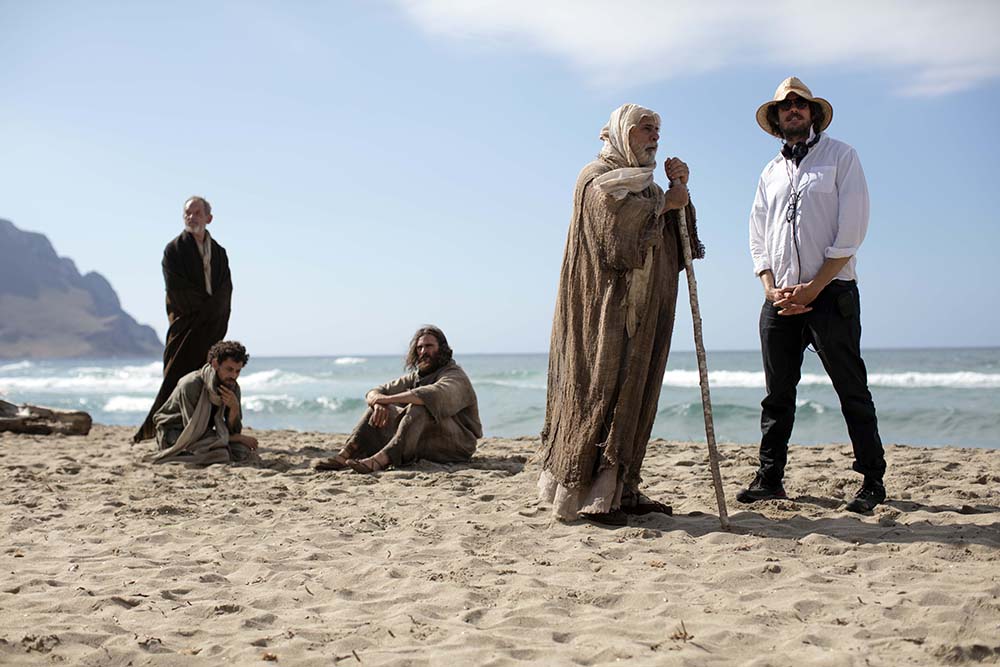 Garth Davis on the set of Mary Magdalene / Transmission
Garth Davis on the set of Mary Magdalene / Transmission
For the first half of the Oscar-nominated feature Lion, director Garth Davis took audiences into the perspective of a five-year-old boy who becomes separated from his family in India.
In Mary Magdalene, he tackles the untold story of a woman who was a pivotal figure in the story of Jesus, but until 2016 went unrecognised as an Apostle and for hundreds of years was falsely described as a prostitute.
“When I dug around I realised that this was a story that hadn't been told yet, in 2000 years,” Davis says.
To properly convey the story, Davis used specific cameras, lenses, lighting, locations and techniques, including a different take on rehearsals with actors such as Rooney Mara and Joaquin Phoenix.
It also saw him collaborate again with Lion cinematographer Greig Fraser (“I've known him since I was 19 so we've shot pretty much everything together”) and continue an aesthetic he’s developed that shies away from artificial light, and the difficulty it placed upon a shoot that was mainly all exteriors.
See the end results for yourself when Mary Magdalene releases in Australian cinemas on 22 March.
1. USING THE CAMERA TO CONVEY PERSPECTIVE AND EMOTION
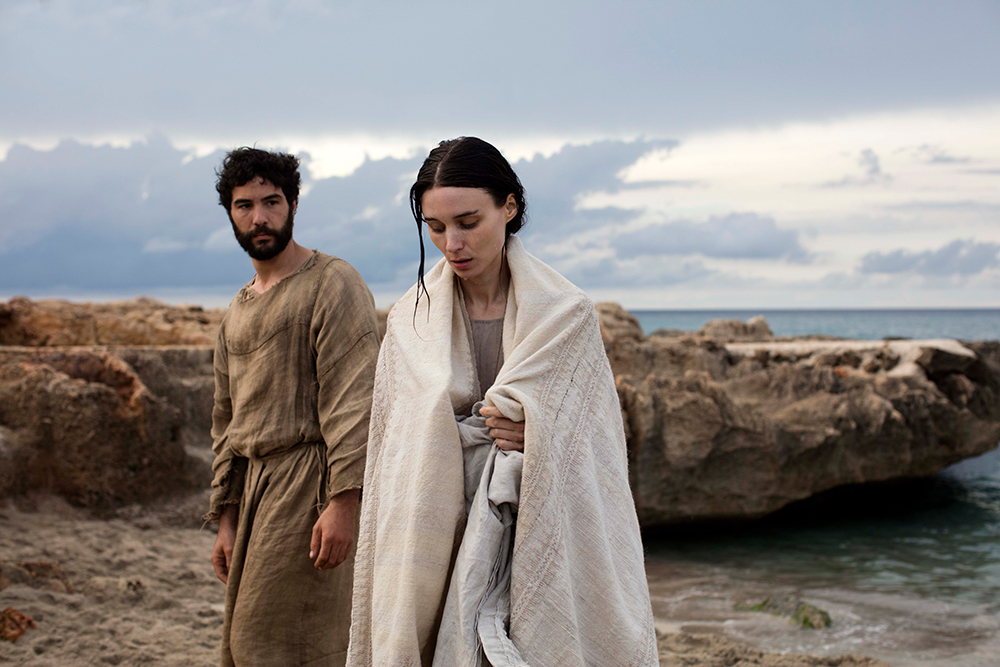 Tahar Rahim as Judas and Rooney Mara as the title character in Mary Magdalene / Transmission
Tahar Rahim as Judas and Rooney Mara as the title character in Mary Magdalene / Transmission
Rather than just shooting for coverage, Davis tries to think about what’s going on at the heart of any particular scene and find interesting ways of bringing that out.
He says in Mary Magdalene you can see this in a couple of examples.
Early in the film, Mary has a panic attack and runs to the synagogue. When she’s brought back to her family’s house Davis says the cameras are almost completely on her.
“We just went very symmetrical with the framing to create that sense of shame and that she had nowhere to hide. She was just blocked in on the frame, locked off, and we could see her kind of suffering within that restraint of the frame.
“So you could have shot that in wides and closes and as you normally would, but I think if you can find a truth and emotional connection to the framing it can be very powerful.”
He says when Mary chooses to leave her family and follow Jesus, the camera becomes alive.
“The world opens up for her and the camera gets a little bit more energy.”
Then at the end, Davis was faced with telling a very well-known story – Jesus’ crucifixion – but through Mary’s eyes.
“So that was a very important moment where Mary runs to discover Jesus carrying a cross [and] just that the reveal of his bloody body and how it's chaotic and not a Biblical telling – it's a very human experience,” he says.
“For Greig and I… to find that face in the chaos and get on those long lenses to put the pressure on that moment was very exciting.”
2. USING NATURAL LIGHT AND SHOOTING EXTERIORS
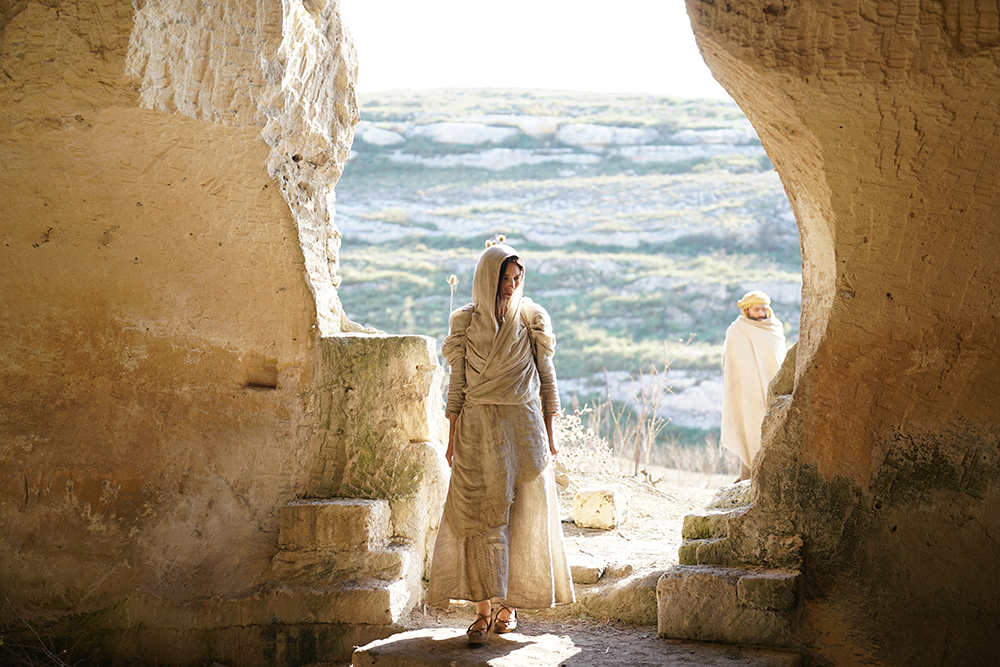 Director Garth Davis and cinematographer Greig Fraser spent a lot of time searching for locations with shadows for their largely exterior shoot / Transmission
Director Garth Davis and cinematographer Greig Fraser spent a lot of time searching for locations with shadows for their largely exterior shoot / Transmission
Davis has become known for not using big artificial light sources. His reason?
“I thought, this is how I want to work.”
“I don't like to light too much because it kind of restricts the actors. I also don't think it looks as good, personally,” he says.
“It's just to give the actors as much freedom as possible. I don't like them having to stand on a mark or get under a C-stand.”
He says with Greig they’ve developed a language on how to achieve the look they want. In Lion, most of the lighting was created using LED Digital Sputniks and he used the same approach in Mary Magdalene.
But there’s a catch – you have to spend more time choosing locations and shooting at certain times of day.
“You have to know, ‘is the window on the north side or the south side?’ and just really work on the locations…
“I mean if I have a luxury one day of a budget where I can light and spend the time to perfect a dolly shot that would be great. But it hasn't been the case. Obviously on Lion you're shooting in very difficult, real locations, you have to move very fast, you're working with children, so this philosophy of [shaping] natural light in a way that's not obtrusive really helps.
“There may be a bit of bounce here and there or Greig uses these little LED lights, which are spectacular because you don't need a generator and also you can match the colour temperature of the light that you're trying to fill. So there's none of those gels constantly going on and off lights.”
Davis’ preference for natural light came about when he first started directing “and I didn’t really know anything.”
“I came through art college, so I was quite fresh and I was working with a DoP at the time who I loved, but he loved to light.”
He became frustrated that by the time the lights were done, only a third of the day was left to work with the actors.
“It looked beautiful and it kind of worked, but I always felt like it wasn't right.”
Then he began working with a different DoP who had the opposite approach – and was ready to go basically in 10 minutes.
“I had all this time with the actors. And suddenly I saw the way. I thought, this is how I want to work,” he says.
“And I got to the edit room it was such a beautiful product. I just felt more connected to the characters, because they weren't in a false environment.”
But if your script has a lot of exterior shots, like Mary Magdalene, it can complicate the shoot.
It meant a lot of time had to be spent searching for ideal locations during the eight-week shoot in southern Italy, which doubled as ancient Israel.
“When we started shooting it was still quite hot and the sun was very harsh in the middle of the day. You couldn't even open your eyes and look at each other, so I mean it's not only ugly with a digital camera but the actors can't even act and perform,” he says.
“We didn't have a lot of cover, [so] Greig and I had to spend a lot of time scouting on our days off to try and find shadows, like large mountains with shadows that maybe we could go and shoot [beside]. It was a real puzzle.”
3. WORKING WITH ACTORS
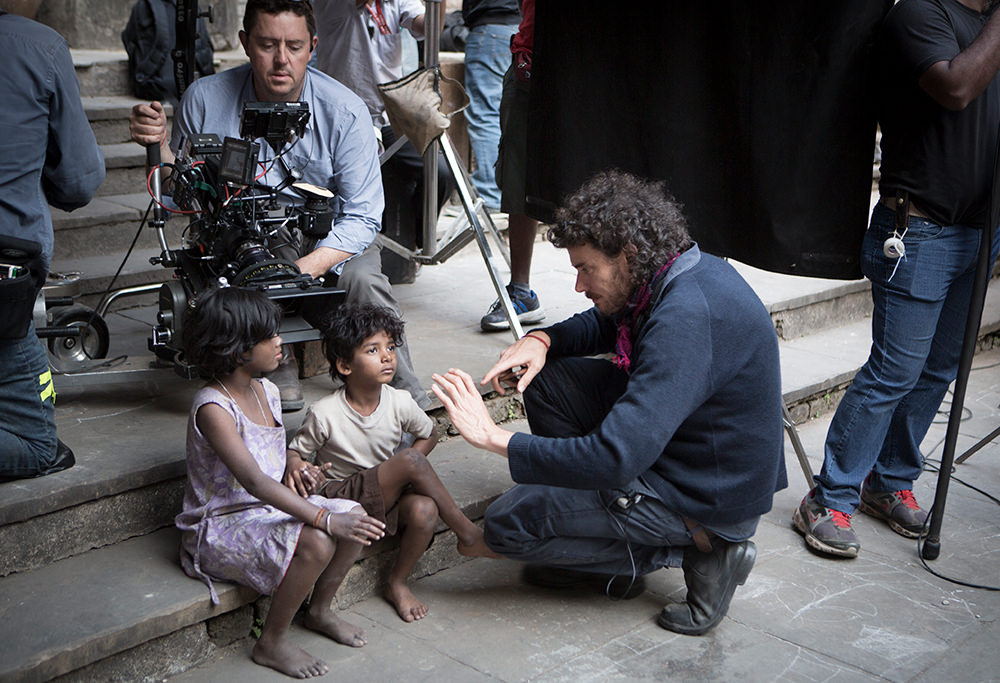 Director Garth Davis with cinematographer Greig Fraser and the young actors on Lion.
Director Garth Davis with cinematographer Greig Fraser and the young actors on Lion.
Davis says in general he’s “not a fan” of rehearsing scenes and instead prefers focusing on character exploration with the actors.
“Often I find a lot of rehearsal techniques are all in the head and intellectual and I just don't enjoy that,” he says.
“I wanted to try and find ways to loosen up [and] find a more profound way of making a connection with their characters.”
So he came up with a kind of art therapy technique that involves the actors tracing each other on paper.
“Then they paint each other's silhouettes in as they see, feel, and connect to that relationship or that person. So they do these kind of wild paintings,” he says. After, they compare and discuss the two images together.
“I was a bit embarrassed to try it at first but it was really actually quite dramatic.”
“Often I find a lot of rehearsal techniques are all in the head and intellectual and I just don't enjoy that.”
He says this process, which he did with Dev Patel and Rooney Mara on Lion, and then between Mara and Joaquin Phoenix, among others, on Mary Magdalene, takes them about an hour and the results can be “profound”.
The other thing they do in the “rehearsal” process is getting used to the practicalities of that world.
“So we had a little [fisherman’s] net set up in Rooney's room and she learned how to tie a net. I got all the girls fishing in the sea with these amazing Sicilian fishermen, all the disciples had to go on these extensive hikes on the tops of mountains and work together to figure out how they might sleep for the night, how to work with the costumes. It was really extensive.”
4. SHOOTING ON 65MM
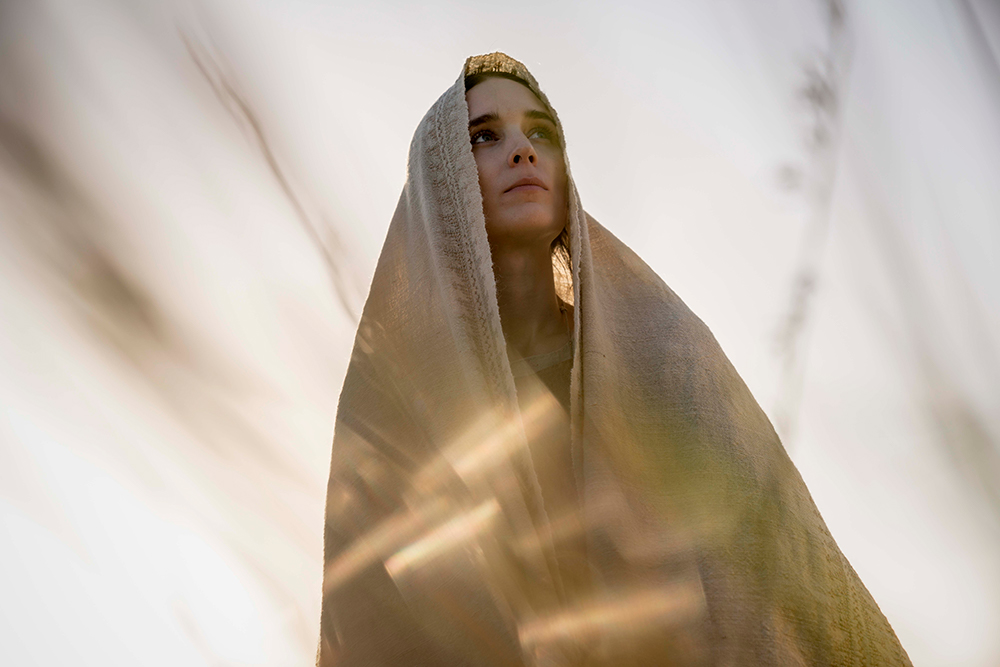 Garth Davis says they wanted the images to feel "spiritual" / Transmission
Garth Davis says they wanted the images to feel "spiritual" / Transmission
Everything about the camera and lens choices for Mary Magdalene was to achieve the exact tone they wanted.
Mary Magdalene was shot on the Arri Alexa 65, a 65mm digital cinema camera that was also used to capture the The Revenant, Mission Impossible: Rogue Nation and another Greig Fraser-shot film Star Wars: Rogue One.
“With Mary Magdalene, Greig came up with this concept to shoot it on 65mm digital, which is kind of a language I'm not used to,” Davis said.
He said the reason they went with the Alexa 65 and shot in 6.5K, “was we thought it might allow the images to feel spiritual rather than domestic, [to] feel the world more and experience it more, which I think it did.”
When it came to lenses, a lot of Mary Magdalene was shot on one lens.
“The lenses for [Greig] I think are about trying to go against the clarity of the digital. So to try and go against that with softer lenses and trying to find that sweet spot where the digital camera still feels organic and human.”
And they used a specific lens of Fraser’s at pivotal moment – Mary’s confusion and despair when she sees Jesus carrying the cross.
Davis says it’s a lens Fraser invented during Star Wars: Rogue One, although this was the first time he was able to use it.
“It has a spherical focal plane. So ordinarily your focal plane is on a line, where as his is on a circle. So if you had people standing in a semicircle you could have them all in focus… But it doesn't look like a shift and tilt lens. It’s a little watery in sides, but it just has this unusual reality about it,” he says.
“I think it helped enhance that feeling… When she feels that human pain of seeing a loved one suffering like that, it's a complicated emotion. It's like you're lost at sea, time and space fall away, sound changes. It's a real sensory downfall in some ways.”
5. TRUSTING YOUR GUT
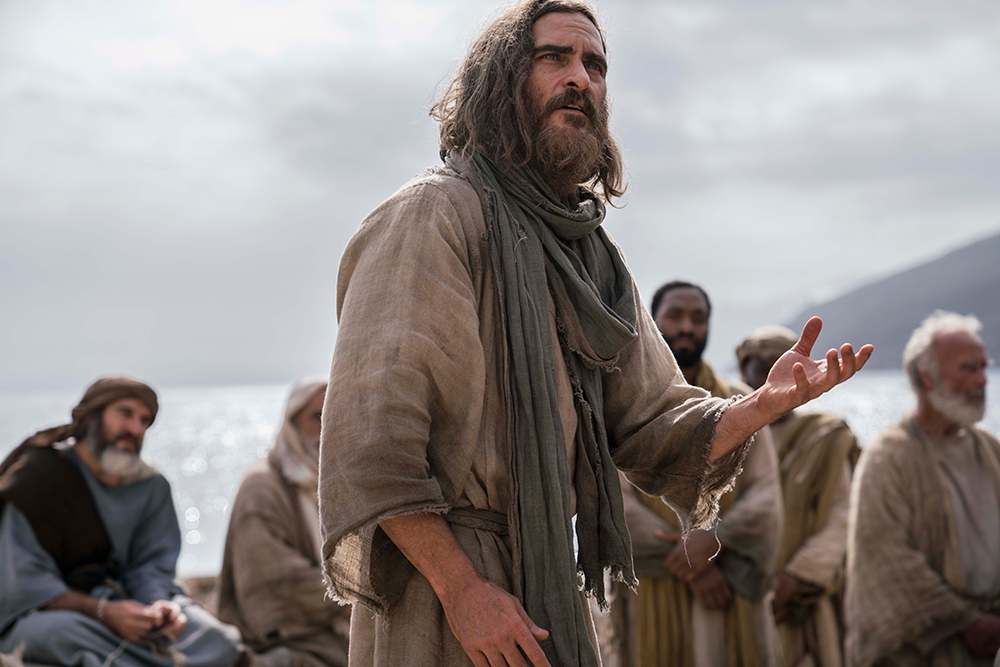 Joaquin Phoenix as Jesus in Mary Magdalene.
Joaquin Phoenix as Jesus in Mary Magdalene.
Davis says with every project he makes a choice or a mistake that he learns something from. But at the end of the day, there’s one lesson that keeps coming back: “Trust your instincts. And never go against that.”
“If your instincts say this choice is wrong or this doesn't feel right, it's not going to be. And have the courage to face that problem with your producers or whoever it may be and try and find a solution to it. Eventually, even though it may seem an impossible fix, you may just find the solution that was way better than what you wanted in the first place,” he says.
“Filmmaking is always about problem solving, but always protecting the beauty of what you're putting on screen or the power of the performance.
“And to that end, just go for spectacular. Get the actors in the landscapes, go for those tough locations and really push the boundaries on that.”
Mary Magdalene releases in Australian cinemas on 22 March. It is distributed by Transmission Films.

What to read next
Director Garth Davis (Lion) talks about his experience directing his latest film Mary Magdalene.
14 Mar 2018
Chris Butel